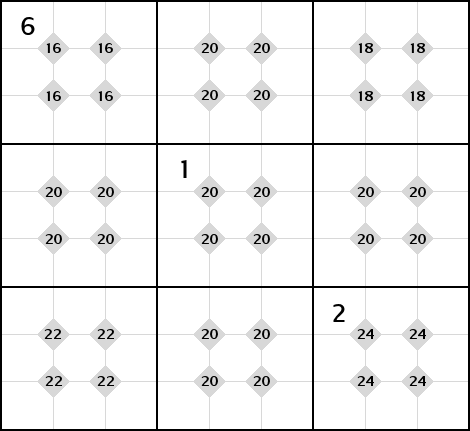On reflection, I have simplified the rules so that they do NOT require "no repeating digits within a cage".
The revised rules:
- fill in the grid so that it forms a valid Sudoku, and satisfies all indicated 4-cell cage sums
- wherever a cage sum is given, this refers to the cage consisting of the 4 adjacent cells (ie 2x2)
The revised rules allow puzzles to be created on
any Sudoku grid. But normal Sudoku rules apply, so repeating digits within a cage can
only occur in those cages that overlap Sudoku box boundaries. There are 64 x K4 cages in a Sudoku grid, and 36 of these are internal to a box. 24 overlap 2 boxes, and 4 (at the 4 corners of box 5) overlap 4 boxes.
Interestingly, nearly every Sudoku grid is uniquely defined by just the 36 cage sums that are internal to a box. I have run several random grid tests, and less than 1 in 15,000 fail to give a unique 36-sum puzzle. And on the rare occasion that it fails, a simple relabelling of the grid (swapping some pair of digits) is sufficient to fix it.
So puzzle generation is quite easy, and from the subset of 36 sums, some can be omitted to make a puzzle harder, and givens (or additional sums) can be added to make a puzzle easier.


